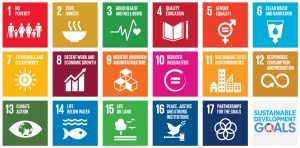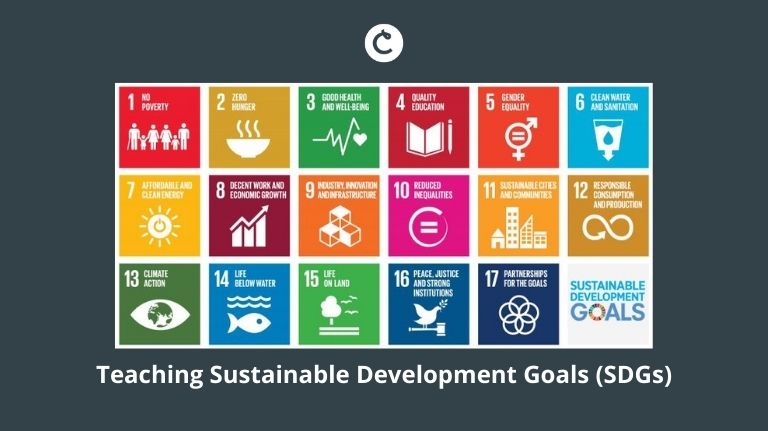Teaching Sustainable Development Goals (SDGs)
What are the UN’s Sustainable Development Goals (SDGs)?
There are many global challenges the world faces in the 21st century. In 2015, the 193 members of the United Nations agreed to achieve 17 Sustainable Development Goals (SDGs) by 2030. These goals address global problems like climate change, inequality, unemployment, violence, and more.

Why should you be teaching Sustainable Development Goals (SDGs)?
In the last few years it’s clear that issues like climate change, plastic waste management, increasing migration, and other major issues are growing global concerns. For the last two years students have become highly active in protesting and finding solutions to both national and global issues. In March 2018, students led March for Our Lives with over 1 million participants to put an end to gun violence in the US. Another ongoing student-led protest that is putting pressure on governments to tackle climate change is School Strike for Climate. Their March 2020 protest had 1.4 million students join from 128 countries.
Traditional education gives students few opportunities to explore, understand, and solve real world problems. So how are students expected to prepare for all these global issues? The SDGs can be used as a framework and tool to support students develop their research, critical thinking, problem solving, teamwork, and communication skills. Students need these 21st century skills to prepare them for the real-world problems they will face during their lifetime. Teaching Sustainable Development Goals (SDGs) and exploring them can also support students in finding their identity and purpose.
How does teaching Sustainable Development Goals (SDGs) relate to your curriculum and standards?
Many of the SDGs relate directly to the different STEAM related topics. In fact, most of the topics in the Next Generation Science Standards (NGSS) align closely with different SDGs. Of course, many of the SDGs relate to social and political issues so they can be used for language or history classes as well. Seeing its flexibility, it should not be a surprise that the SDGs can also be aligned with Common Core.
How can you start teaching the SDGs?
Thrive and Classtime have teamed up to provide you with an activity/discussion on SDG #13 Climate Action to be used by math, science, language, and history teachers. SDG #13 relates to the issues of global climate change and the aim is to reduce CO2 emissions in hopes to prevent global temperature from rising any further. We have done our best to align these activities to NGSS and Common Core at a high school level.
You can access all questions on Classtime for free:
Science: http://bit.ly/SDG13-Science-Aug19
Math: http://bit.ly/SDG13-Math-Aug19

Language: http://bit.ly/SDG13-Lang-Aug19
Where can you get more SDG content?
If you want to cover more of SDGs in your classroom we have activity/discussion questions on all SDGs related to the areas of math, science, and language/history. They are best suited for high school or university educators. You can find them here.
If you want more pre-made content, please tell us which SDGs you want to cover. Based on demand, we plan on developing new SDG resources/programs.
Want an SDG Challenge or curriculum?
Thrive offers high schools and universities SDG Challenges, which combine design thinking and project based learning to empower students to discover their purpose through exploring the SDGs. We also offer a year long SDG curriculum with an SDG Challenge as the capstone project. Learn more here, or contact Mario (thrivecentro@gmail.com) to learn which SDG program fits your school or university.




Nkeh methodius
December 18, 2019 at 6:43 amVery inspiring.
I’d love to be a part of this wonderful opportunity to impact My globe. How can I connect better